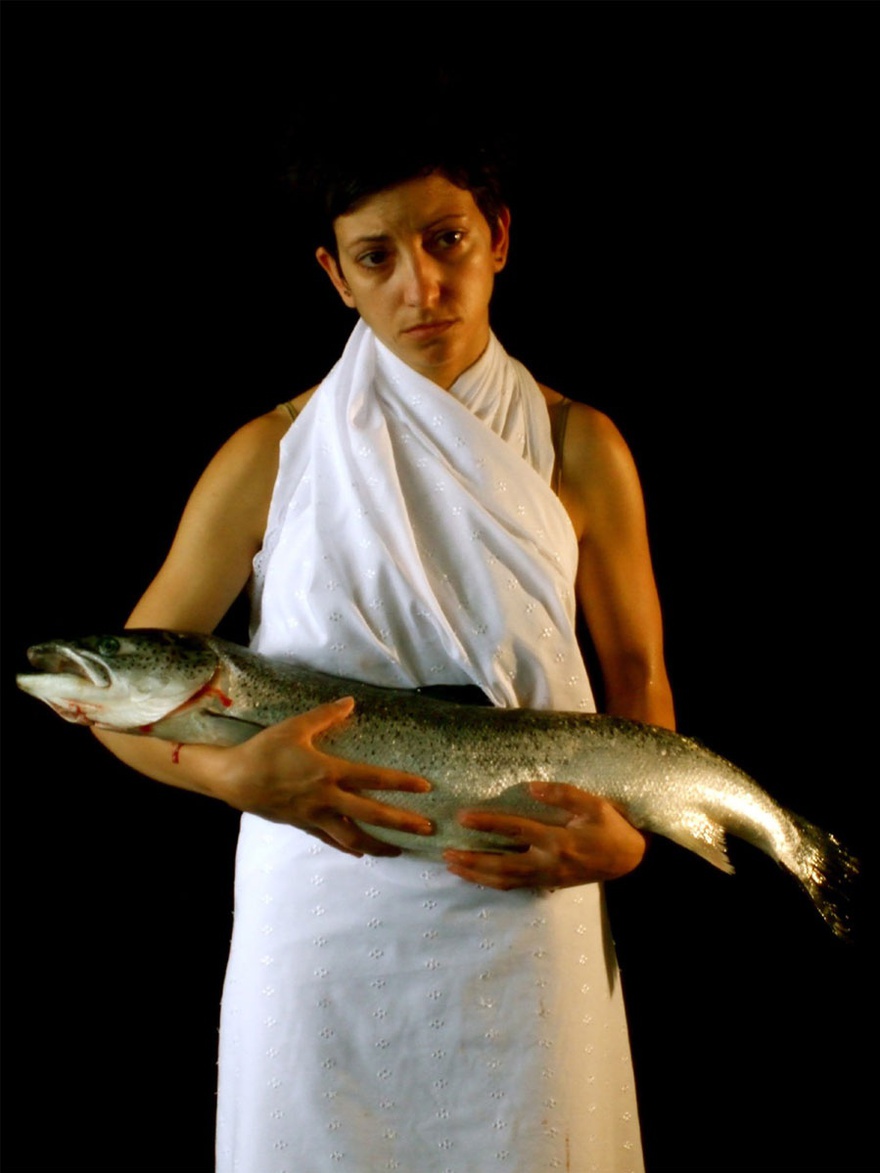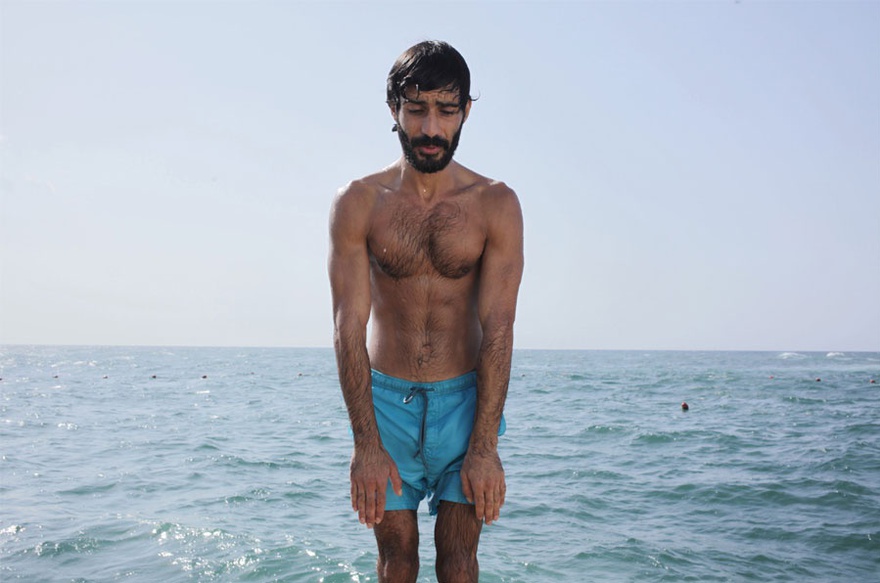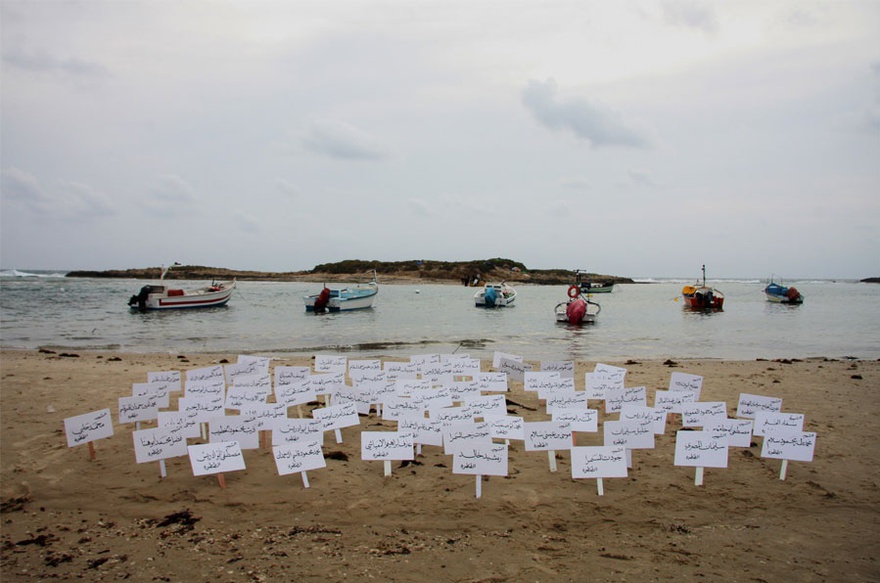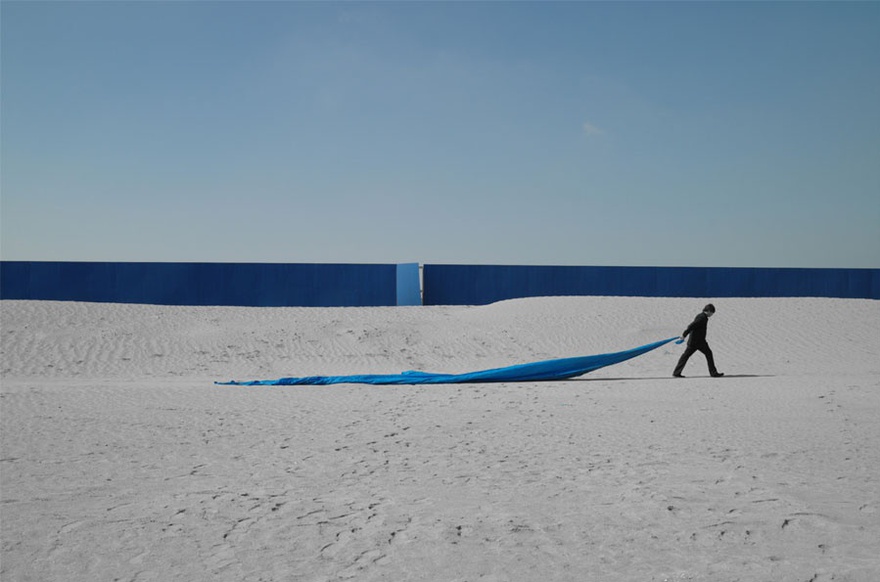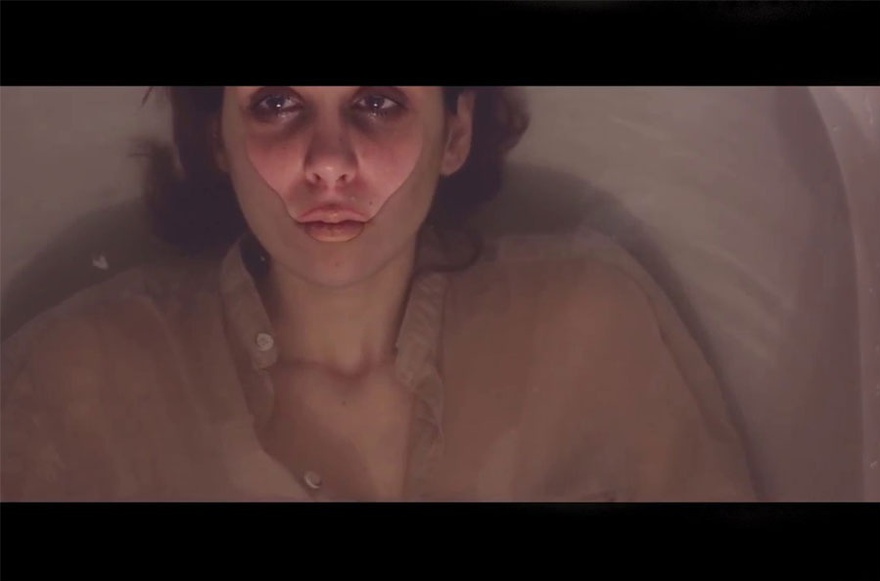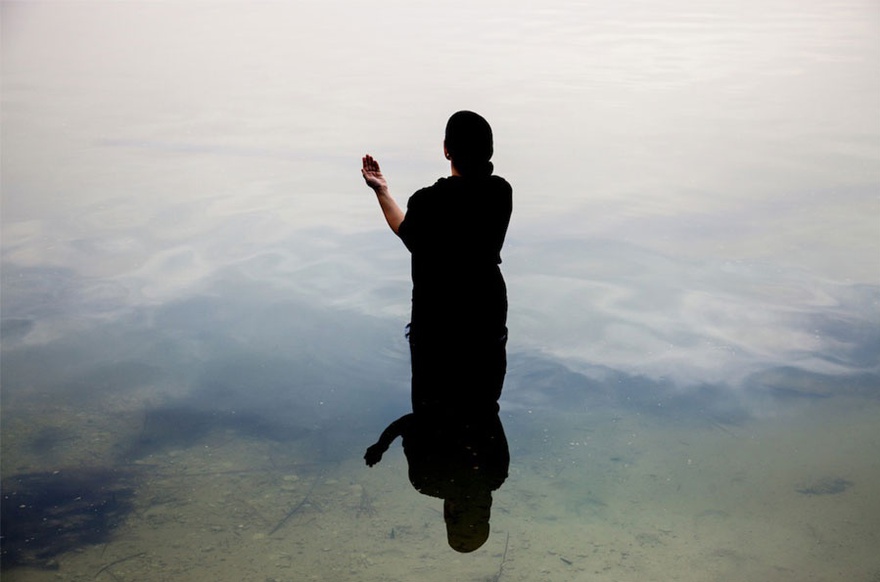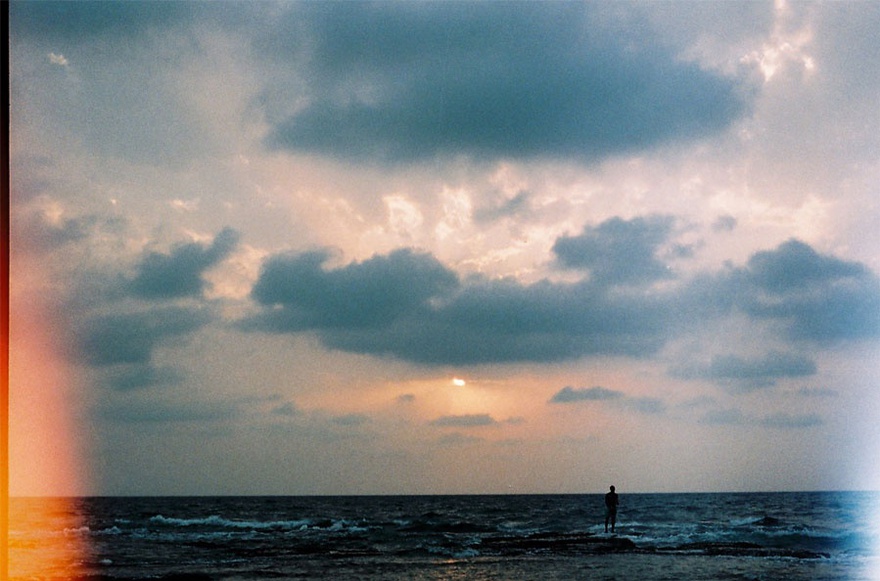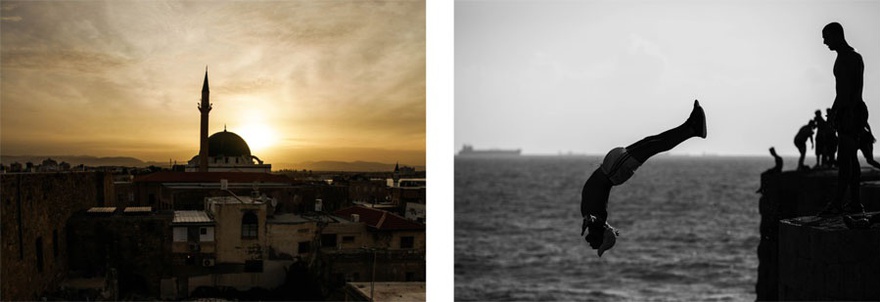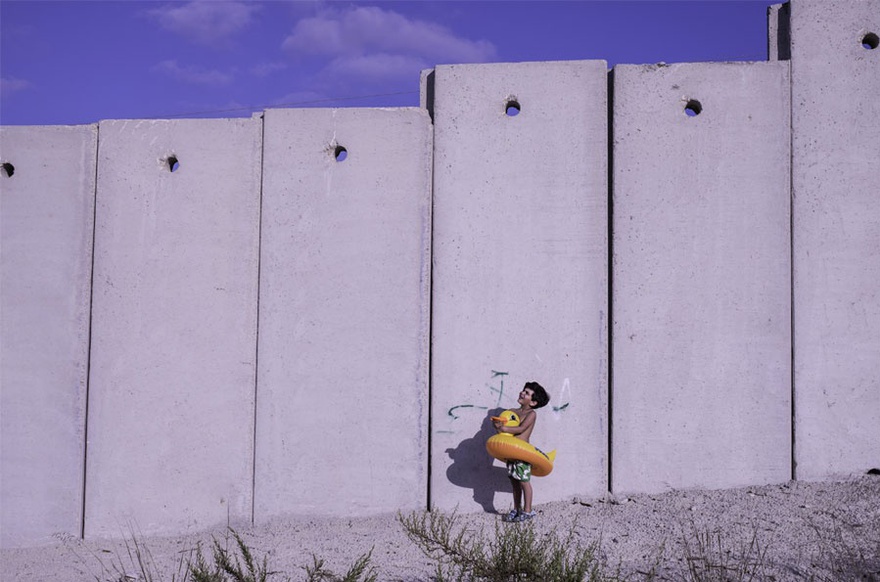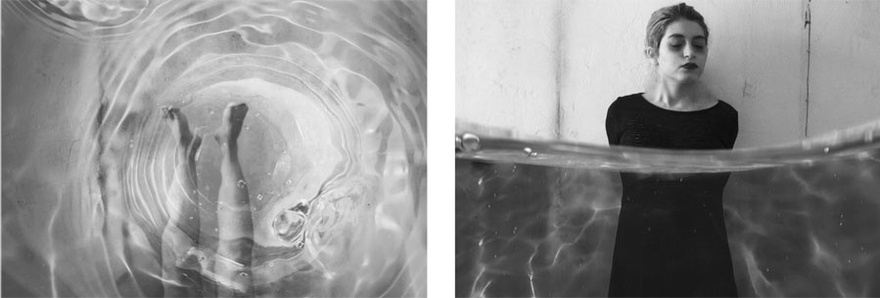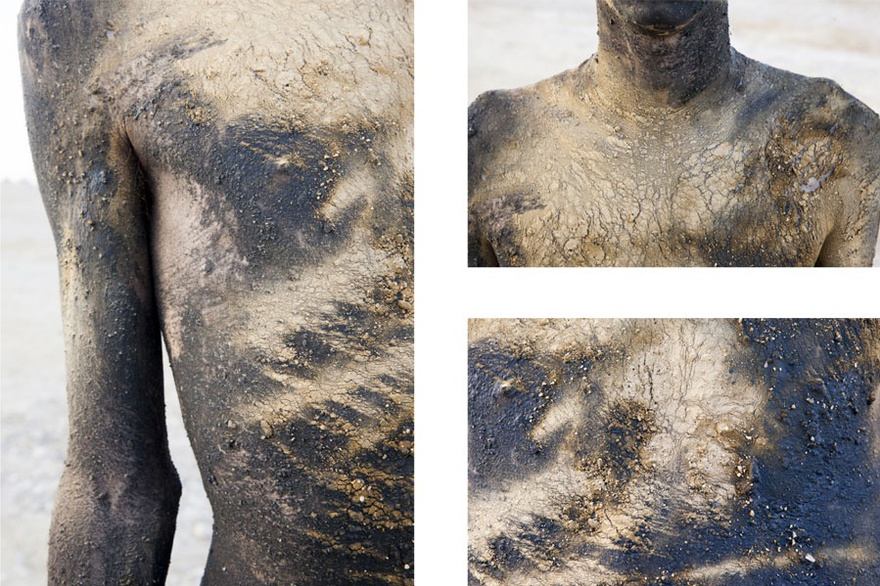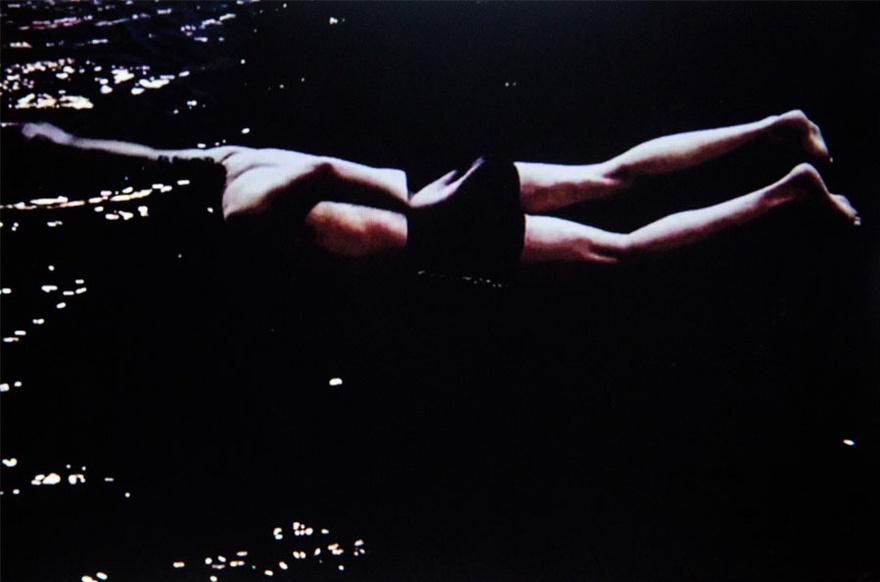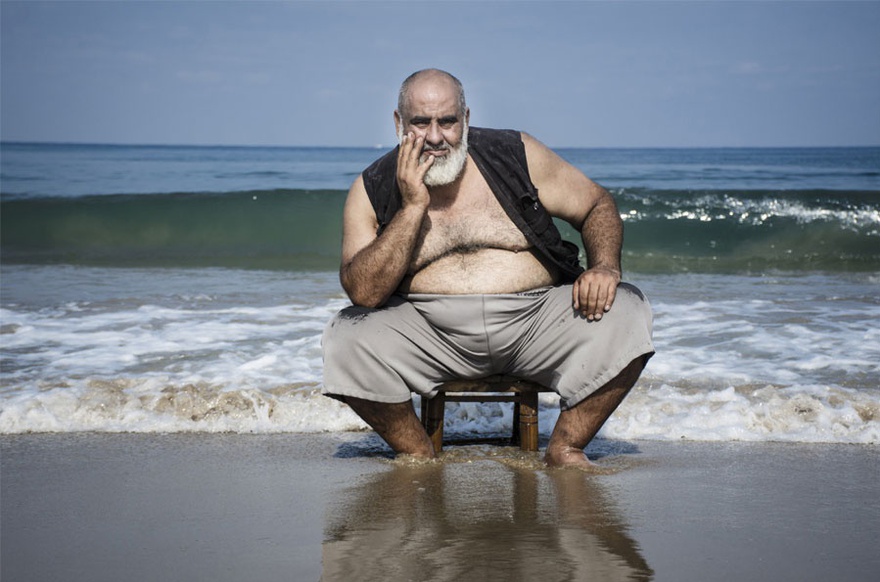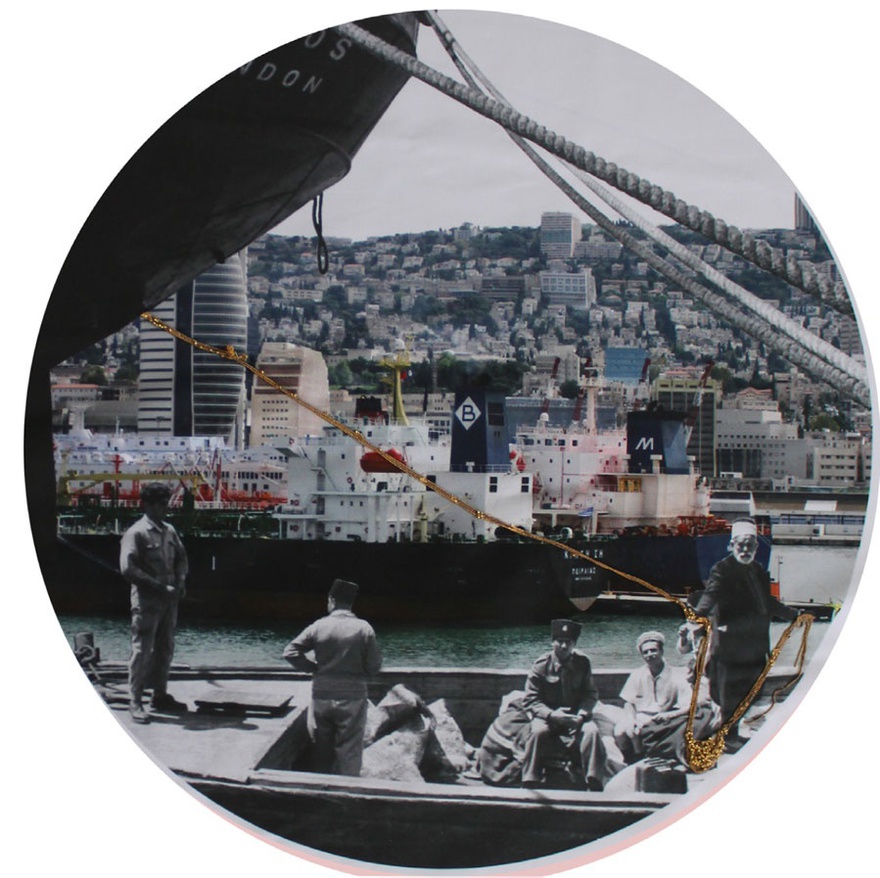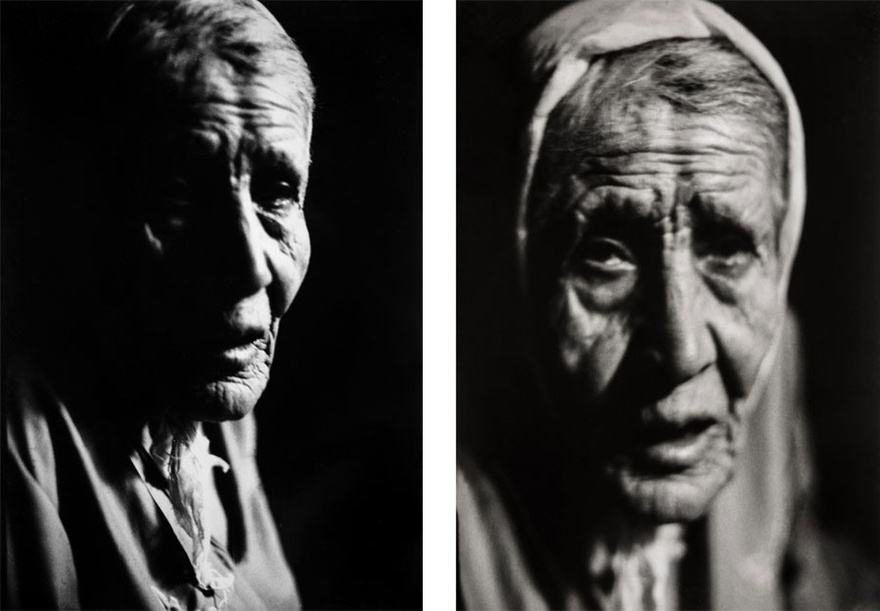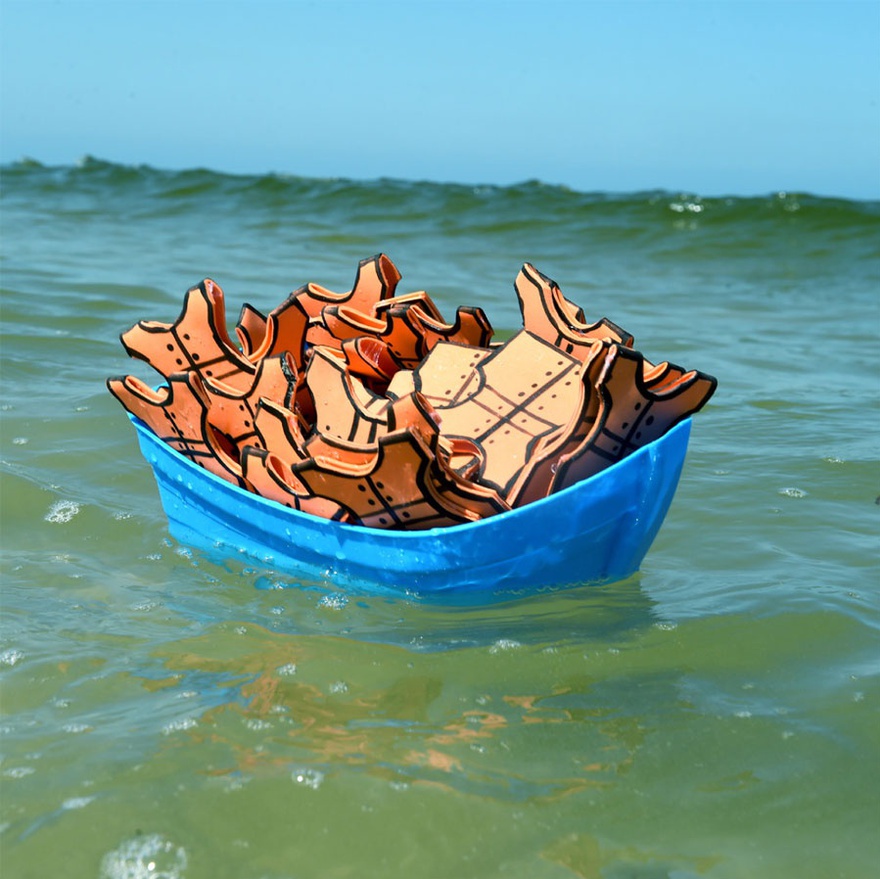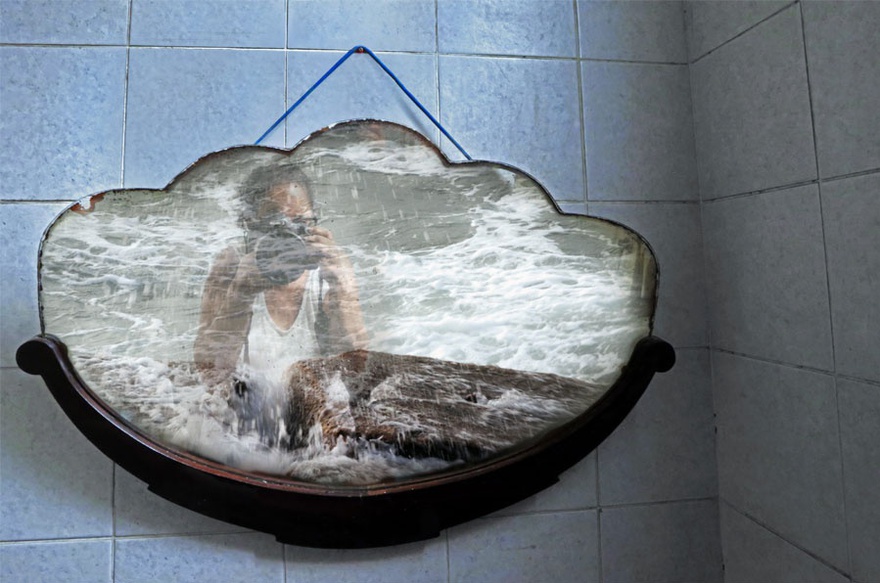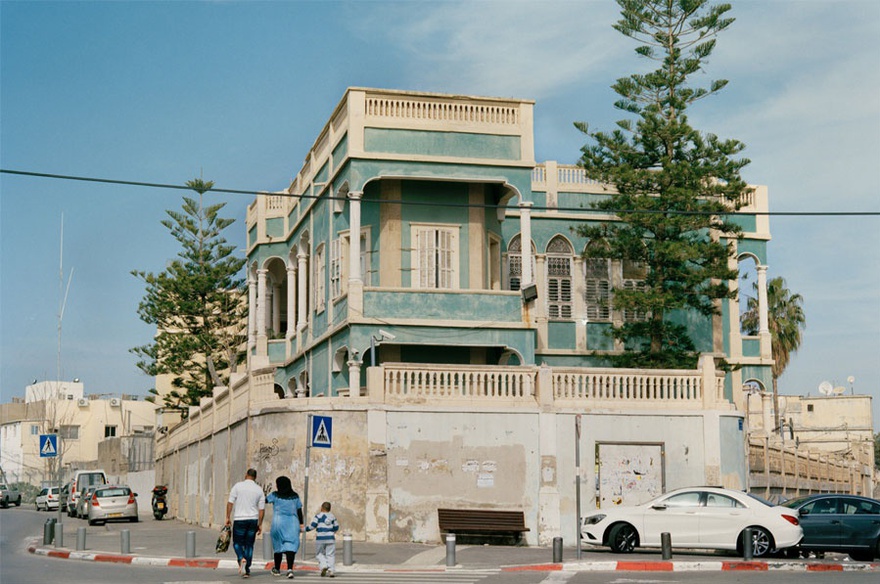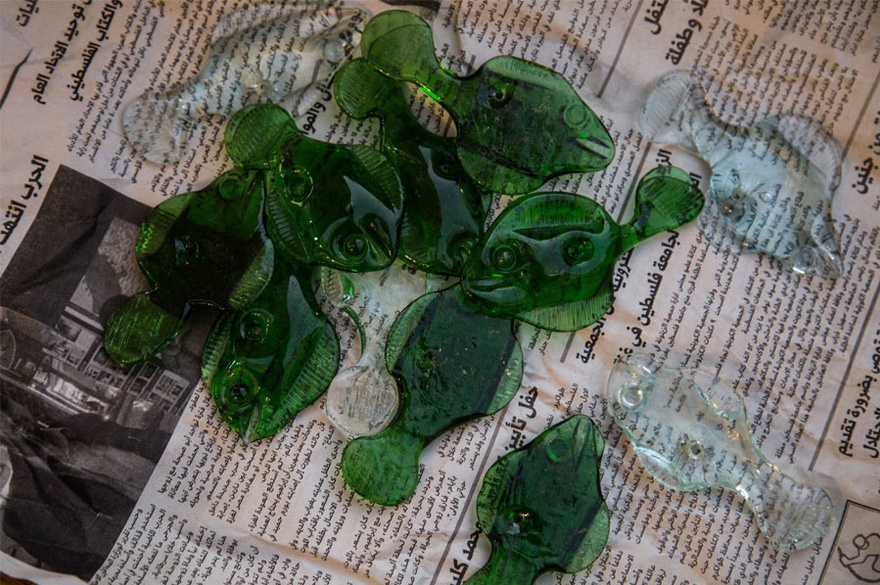Publications
Qalandiya International 2016
The People of the Sea: Haifa
The People of the Sea
Location Haifa
Venue: Arab Culture Center (former City Hall).
Dates/Times: All days of the week 16:00–20:00. Runs through 19 October, 2016.
Organizers The Arab Culture Association
Curator Mohamed Badarne
Artists Click on the names below to visit each artist's section
Maiada Abboud, Tamara Abdul Hadi, Rana Bishara, Tarek Al-Ghoussein, Ousama & Majd Al-Hofiri, Sama Alshaibi, Athar Group, Hamody Ghannam, Nader Hawary, Samar Hazboun, Ala Hmedy, Ahed Izhiman, Monther Jawabreh, Zeinab Khalifa, Manal Mahamid, Rawya Group, Salah Saouli, Shareef Sarhan, Randa Shaath, Sophie Shannir, Mohammad Shaqdih, Khuloud Tannous, Rawiya Collective.
Click on the links below to visit each section
Curatorial Statement by Mohamed Badarne
Click here to download the full PDF programme for The People of the Sea, Haifa (dual-language: English/Arabic)
Mohamed Badarne
Who are the people of the sea? They are those who earn a living from it, drown in it, are deprived from it, or are dreaming about it. They are those who are expanding the sea or adding more depth to it. They are the people, for whom the sea does not belong to an abstract nature anymore, just to become an intricate subject that has a story in time and place. It has complexities and details, it has military laws, and it inspires fond memories; it provides work for craftsmen, and is a subject for architects and a theatre for those who immerse themselves in their dreams. The people of the sea are those who, for them, the sea is a carpet for life.
The works of art in the exhibition People of the Sea (Ahil al-Bahar) reflects the relationship built between the people and the sea itself. It is a relationship based on the complicated loss of many different faces and shapes, and the exhibition tries to give a voice to these relationships, through visual imagery of the lives of these people of the sea, and through the imagination of those who are depriced from it.
People of the Sea provides a stimulating space for artists to display their works and productions that are related to the theme. This space allows their art to capture the small details, which are not only limited to images of fishermen and the sea itself, but also the deeper stories and narratives, in which artists and photographers use the sea to illustrate their perspectives through angles of perspective, structures, subject of focus, and technical methods each choose to use. In addition, the exhibition collects many creative works from around the world, especially by Palestinian refugees, in a creative environment in Haifa that strives to flourish in spite of the Israeli obstacles, aiming to provide a space for culture in the Palestinian coast.
We have chosen to use photography as the main instrument for the formation of this vision, with all its various branches, including films/videos and other visual pieces. We made this choice with the realization of the need to further develop this art form, especially for its natural documentation of the human and social aspects of our narrative. Perhaps our artistic works, in all their varieties, will send one beautiful Palestinian message in the face of colonialism's visual language.
Malada Abboud is an artist and researcher who was born in Palestine, Abboud received her PhD degree from Sheffield Hallam University. Her solo and group exhibitions were presented in both Palestine and England. Aboud's works deal with the ways that social and religious structures interconnect and influence the individual. Using endurance art, Aboud's interest in social, political and religious issues draws on a unique and personal perspective.
This video shows the artist's alienation and isolation from her own identity and culture. It is a practical test of cultural limitations, differences, truths and identities.
Tamara Abdul Hadi is an independent photographer, born to Iraqi parents in the UAE and raised in Montreal, Canada. Abdul Hadi's work explores the complexity and idiosyncrasy of minority communities that are often subjected to stereotyping and underrepresentation interchangeably. Her work also touches on ideas of masculinity and self- representation. Along with being a photographer, she creates and teaches photography workshops, so far in Palestine, Egypt, Iraq, Lebanon and Tunisia. Abdul Hadi is a founding member of RAWIYA Collective, and member of The Medium.
Rana Bishara is an artist from Tarshiha. Bishara received her Masters in Fine Art at the Savannah College of Art and Design in 2003. Between 2009 and 2011, she headed the art department at Al-Quds University in Jerusalem. Bishara has participated in many international solo and group exhibitions, and her work is held in various important collections in the world. In 2012, she created a monument commemorating the Sabra and Shatila massacre in Bagnolet, Paris.
Al-Tantura – A string of Spray and The Salt of a Memory.
When the massacre took place and the martyrs were executed in cold blood, the Tantura beach broke down, its sand screamed in pain towards the heavens – a scream inhaled by those who were displaced from their land and sought refuge elsewhere; only to inevitably return from the depths of the sea, wander through Tantura again with their string of spray, to reclaim this memory…and to finally be the victor.
Tarek Al-Ghoussein is an artist and professor of visual art in NYU/Abu Dhabi. His solo shows including K Files, E Series and A Retrospective: Works from 2003- 2010, were exhibited in prominent venues, and his works are part of permanent collections in Guggenheim Museum (New York) and The Royal Museum of Photography (Copenhagen) among others. Al-Goussein work explores the boundaries between landscape photography, self-portraiture and performance art.
This work investigates the formation of identity in the context of loss and inaccessibility to an imagined 'homeland', through reconstructing allegorical scenarios for the obstacles and walls erected in the Occupied Territories.
Ousama and Majd Al-Hufeiri are Syrian siblings. They were raised in an artistic family as their father is a theatre director and their mother is an actress. The Al-Hufeiri brothers participated in many theatre plays and televised works, as well as various arts and cinema festivals. They also produced the short film Waveless. The Al-Hufeiri brothers sought refuge in Berlin following the war in Syria, and they are currently directing short movies portraying the lives of Syrian refugees.
After she has lost her boyfriend in the sea, a 25-year-old young woman became addicted to drugs in order to forget about her tragedy. Her hallucinations are reflections of the beautiful and romantic past with him. She now lives in two worlds; a gloomy realistic one without feelings, and another imaginary world where her boyfriend is always with her.
Sama Alshaibi is a Palestinian-Iraqi artist and professor of Photography at University of Arizona, USA, Alshaibi received two national teaching awards in Photography, granted the title of 'University of Arizona's 1885 Distinguished Scholar', and awarded the prestigious Fulbright Scholar Fellowship. In 2015, she published her first monograph Sama Alshaibi: Sand Rushes In. Ashaibi's work includes fifteen solo exhibitions around the world. She also participated in prominent festivals and fairs.
In Silsila, Alshaibi re-traces history in the present to speak about encroaching mass migrations due to increasing water scarcity. This multimedia series narrates the story of water, both real and imagined. Inspired by the great fourteenth-century Moroccan traveller, Ibn Battuta.
Athar Group is a photography group and a project for social change made up of young Palestinian photographers supervised by Mohamed Badarne. Under this project, a group containing tens of young photographers is trained annually, and encouraged to combine photography with social mobility and human rights agendas.
For three years, 'Athar', has been capturing visual details of a village that has only one gateway; one single entrance for everything: people, vehicles, poverty and oppression. This village has been surrounded by an Israeli wall of sand to separate it from the fancy, neighbouring Jewish city of Caesarea. Of the 1948's occupied territories, Jesir Al-Zarqa is the only Palestinian coastal village that remained after the Nakba. Despite the choking siege, hope is still possible thanks to the village's widest gate: The Sea.
Hamody Ghannam is an artist and photographer from Haifa, Ghannam studied photography, art history and painting at Tiltan College before majoring in geographical photography at the Galitz School of Photography in 2012. Ghannam specializes in lighting techniques for diverse backgrounds in presenting his visual stories.
In this work, Ghannam brings three different photographs of three different cultures and communities living in Haifa today. Spread out in the room, with the projector creating the illusion of the city's port barriers, is the only way to see these photographs.
Nader Hawari is a self-taught photographer from the city of Akka (Acre), Hawari has participated in several exhibitions in Palestine and worldwide since he began his career in 2003. While he practices all types of photography, Hawari is particularly passionate about landscape photography, still life, and portraits, which are characterized by his utilization of natural light, especially when capturing images of his home city of Akka.
Nader is a construction worker. When he took photography as a means to get away from his hard labour, he could not find anything in Akka to photograph but the sea. In his pictures, Nader reflects on his relationship with the sea – the same sea that Israel has stolen and suffocated until it has become distant from the people living by it and their daily lives.
Samar Hazboun is an artist and photographer who lives and works in Palestine and Europe. In addition to pursuing her degree in International Relations in Prague, Hazboun works as a photo editor for the Middle East and North Africa region for Agence France-Presse (AFP). She received an award from Khalil Al-Sakakini Cultural Center for her project on violence against women in Palestine titled Hush, and received the Culture in Defiance grant from the Prince Claus Fund.
Ala Hmedy is a conceptual artist who was born in Damascus. In 2015, Hmedy won the first prize of The Arab Photographers Union. Her work was exhibited in Syria, Belgium, UAE, France, England and Morocco, and she was an artist in residence at Testrup Højskole - Aarhus, Denmark.
'Drowning is not falling. It's remaining under water. Being static under the streaming water is a violation of all concepts of stillness and movement at once.'
Born in Jerusalem, Ahed Izhiman worked as a photography consultant and freelance photographer for ten years. Since 2001, Izhiman contributed to community organizations as a young artist, lecturer and professional trainer in fine arts. Izhiman is also a co-founder of the first joint studio for sharing artists' work in Jerusalem called Art Lab, and his art works have been exhibited in many national and international galleries.
This work captures the concept of losing a spot of nature, while linking this concept with the religious narrative through body, land and texture.
A Palestinian visual and performance artist based in Bethlehem, Monther Jawabreh has presented his artwork in several cities, in both solo and collective exhibitions. In 2010, he developed and exhibited a collection in gallery One, and in 2012 he exhibited his collection of 12 paintings titled As Once Was Known. Jawabreh has travelled the Euro-Mediterranean region with his artwork, which uses a refined fusion of techniques comprising of drawing, painting, experimental performances and video art, among others.
This work deals with the racist Israeli legislation that aim to confiscate the Palestinians' water resources. This legislation is preventing Palestinians not only from water supply, but also from enjoying the water in all possible ways. Visiting the beach or swimming in the sea became for many Palestinians a big dream.
Zeinab Khalifa is a photographer from south Lebanon. Through Photographing personal stories, Khalifa attempts to reflect the reality of the complex Lebanese society, by highlighting segregations, separation of the classes and suffering. Her work has been published in many Lebanese websites including Assafir.
Despite the occupation's borders and the barriers that prevent Jamal, Muhammad and Fayez from reaching their original villages, the sea connects them to their homeland. Although they were uprooted from the beaches of Palestine to Sidon, they never left the sea they were raised by.
Manal Mahamid is an artist, born in Muaweya village near Umm El-Fahem, Palestine. Since 1996, Mahamid's work has exhibited in over 60 group exhibitions, including in London and New York. In 2007 Mahamid received The Delfina Foundation's Riwaq Biennale Resident Artist Award, and was shortlisted for the A.M.Qattan Young Artist Award in 2005. Her works across Multimedia have focused on the Palestinian existence and identity.
The barrels installation is evocative of the oil barrels that were shipped from Haifa port during the British Mandate, a symbol of the colonialist regime and the oil industry, which brought about the city's social, political, and architectural transformation in pre-1948 Haifa.
Salah Saouli lives in Berlin and Beirut. His work has been shown internationally. He studied sculpture and painting at the University of Arts in Berlin after receiving his Diplome des etudes superieures in fine arts at the Lebanese University in Beirut. Saouli received the First Award of 'Blickachse 2006', Germany, and the Honour Award of the Third Sharjah Biennale. UAE. In 2015, Saouli received the DANZ award in the Sculpture by the Sea Biennale, Denmark.
Through this work, Saouli tells the story of the woman who watered all her plants before evacuating her house in 1948 – his grandmother Mariam, the brilliant illiterate storyteller from Haifa.
Shareef Sarhan is an artist, photographer and freelance designer who was born in Gaza, Sarhan is a founding member of the Windows from Gaza for Contemporary Art group. Sarhan received his diploma in arts from the ICS, USA, and has participated in many individual and group exhibitions, such as The Arts and Crafts village and The Port Gallery in Gaza, besides exhibiting some of his works in Palestine and abroad.
'In the last years during the great immigration wave to European countries, the sea has failed many of my friends and suns of my homelands, until the news of their drowning has ceased to become news. One day I asked Abu Ahed – a lifeguard: "Who will drown today?". He pointed to the sea answering: "no one, look at it, the sea is happy today".'
Randa Shaath is a Cairo-based photography professor at the American University of Cairo, and is a trainer and mentor of award-winning photographers of AFAC's Documentary Photography Program as well as a graphic designer for children's books at Dar Al-Fata Al-Arabi. From 2008 till 2014, Shaath was the photo editor of Al-Shorouk daily newspaper. Shaath published three monographs and her works exhibited in Egypt and abroad. In 2006 Shaath represented Egypt at the Bienal de São Paulo.
'My grandmother smiled at me and asked me: "what do you see in the mirror?". I answered: "I can see the sea". She laughed. Where did this answer come from? Why the sea? How the sea? After this picture, the mirror started storing millions of pictures.'
Sophie Shannir is a photographer based in Jaffa and a graduate of Bezalel Academy of Art and Design in Jerusalem, Shannir's work deals with the influence of the occupation on herself and her surroundings. Though, architecture and history are also visible in her work.
These photographs are part of a series documenting the urban landscape of Jaffa and its renewed view that symbolize the gentrification of the city, while the Palestinian existence disappears from the concepts of 'modernization', 'construction' and 'progressiveness'.
Mohammad Shaqdih is an artist, designer and printmaker, Shaqdih is an assistant director of Darat Al-Funun in Amman. His works were exhibited at various international artists book fairs and biennials around the world, among many works that have been acquired by various private collections. Shaqdih artist's book The Snake was included in the third International Artist's Books Biennale in Alexandria (2008). In 2013, Shaqdih was awarded the Cultural Heritage Fellowship for Museums and Community Engagement at University College London.
Installation
There are no windows opening to the sea in Hebron, but the craftsman who had deep love for the water has decided to make his own fish, Hebron's fish until he fulfills his dream to return to the sea.
Khloud Tannous is an actress and photographer born in Moscow, Tannous studied theatre in the University of Haifa, and is a co-founder of Khashabi Theater in Haifa, Palestine.
Aquifer
A minute from a realistic scene that did not end yet.
Rawiya are a collective of photographers from the Middle East present an insider's view of a region in flux balancing its contradictions while reflecting on social and political issues and stereotypes. Rawiya, meaning 'she who tells a story' brings together the photographic styles of Myriam Abdel Aziz, Tamara Abdul Hadi, Laura Boushnak, Tanya Habjouqa and Tasneem Alsultan.
The workshop that was made possible with the support of The Arab Fund for Arts and Culture focused on developing participants' ability to create a visual narrative depicting life in Gaza, and empowering them as young professionals striving to succeed in a competitive job market.
Mohamed Badarne is a photographer, trainer and activist. He teaches photography and leads workshops in cooperation with NGOs, community centres and independent groups. For his own photographic work he has received grants from renowned art foundations, and his projects have been exhibited in major venues, including Darat Al Funun in Amman, the International Labour Organization in Geneva and the UN Headquarters in New York. He lives in Haifa and Berlin.

